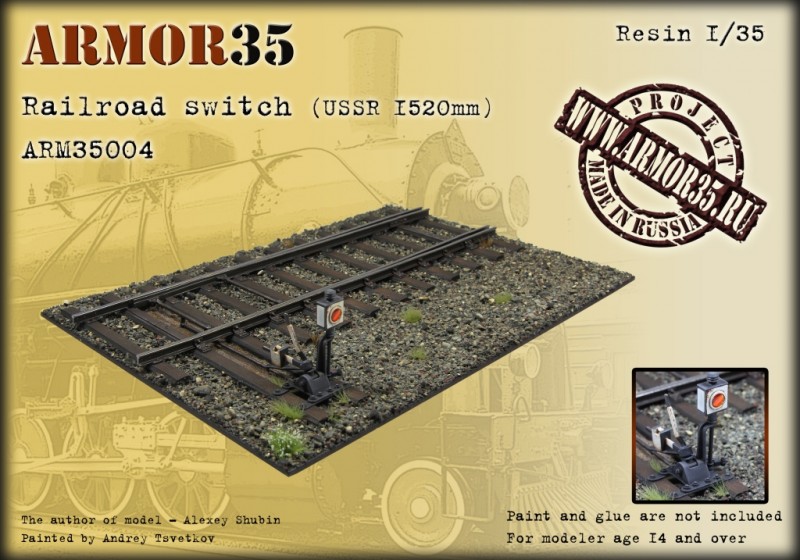I’m a bit surprised that this is being marketed as a switch, when in reality it only comprises perhaps 15% of what a railroad considers a switch. Although the section shown is very handsomely reproduced with excellent detail, I have to wonder just how many modelers will choose to use this fragment of a switch in a diorama, as I’m uncertain as to just what it adds by itself – other than confusion. No doubt the main reasons for this situation are the dioramatist’s limited space and Armor35’s design and production costs. I suspect that at some future point they will release the missing components – for those modelers who are willing to allocate the space for it.
I tried to find the dimensions of this component, but Armor35 doesn’t yet list this product on their website. I would guess that the additional required segments would bring the total length out to about 36”, but that depends largely on what “number” they are assigning to this switch, which has to do with the radius of the diverging track just beyond the point of the “frog”.

This number is the ratio of a measurement taken at any point between the frog point rails, and how many multiples of that measurement this location lies from the point of the frog. Industrial sidings have a very low switch number (~6-8), as a freight train switching them will be moving quite slowly. However, switches for a high-speed passing track on a main line will be a much higher number (~20-30). The main line is always that route taken by the straight track, on the basis of it carrying the higher speed traffic. The guard rails across from the frog ensure that the outer wheel (of each axle) is pressed firmly against the stock (outer) rail, so that the inner wheel has no opportunity to jump to the other track while passing through the frog. This system is not foolproof, and sometimes a car will have one truck (2 axles) follow one track, while the second truck goes the other way, which is known as “splitting the switch” – invariably leading to that car derailing and an accident; the degree of which depending on many factors.
Much research has led to improvements in switches, greatly improving safety in allowing express trains to pass through switches at a much higher speed - even if taking the divergent track. Part of the need for this is the increased instance of “single track mains”, where trains traveling at varying speeds in opposite directions need to quickly duck into a siding to let a priority train pass by, but then quickly resume their own journey. There are many special situations requiring specialized types of switches, and information on these can be found on the web.

This model switch (properly termed a “turnout”, to distinguish it from the many electronic switches on a model railroad) illustrates a “dual-gauge switch”. The “standard gauge” only goes straight through this switch, while the “narrow gauge” can either turn left (approaching from the left), or also continue straight. I won’t hazard a guess as to why the points are currently set in this way, as for the time being no train of either gauge can (safely) pass through this switch. It’s simply a matter of following the lines of the rails, and at the moment the points do not connect with either the narrow or standard gauge stock rails.
Although many of you are possibly overwhelmed at this point [sic], this is merely the visible tip of the iceberg as far as switch technology goes. The isolated switch in this kit is manually operated at the switchstand (usually kept locked against vandalism), but in complex junction areas all the switches are controlled in a centralized location to facilitate communication and coordination. In modern times electronic “switch motors” are remotely controlled from perhaps hundreds of miles away, while formally the “Armstrong” method of throwing a lever in a local interlocking tower would transmit the mechanical motion to the switch “throwbar” by an elaborate connecting system of rods and levers, as partially illustrated here by the restored “signal frame” of St. Albans South in England. We will leave the color codes for another time.







 At least I correctly stated 5' gauge in other reviews!
At least I correctly stated 5' gauge in other reviews! 




























